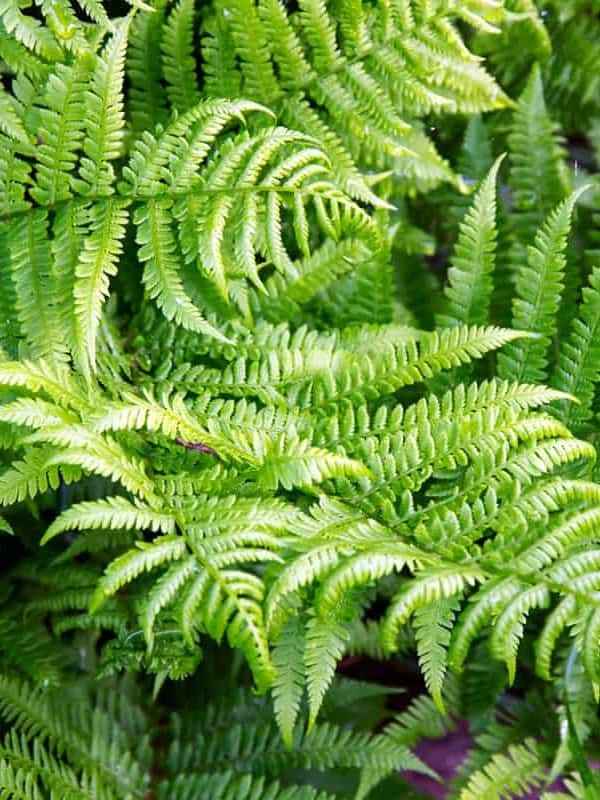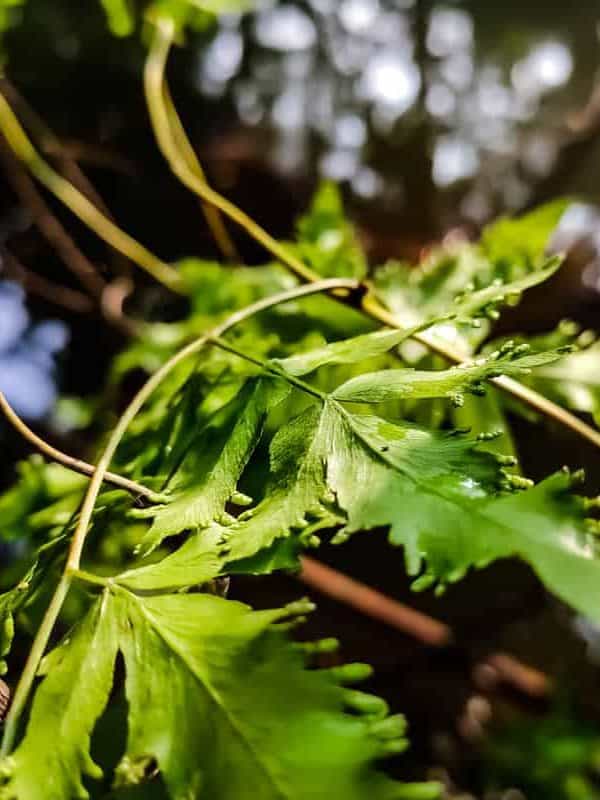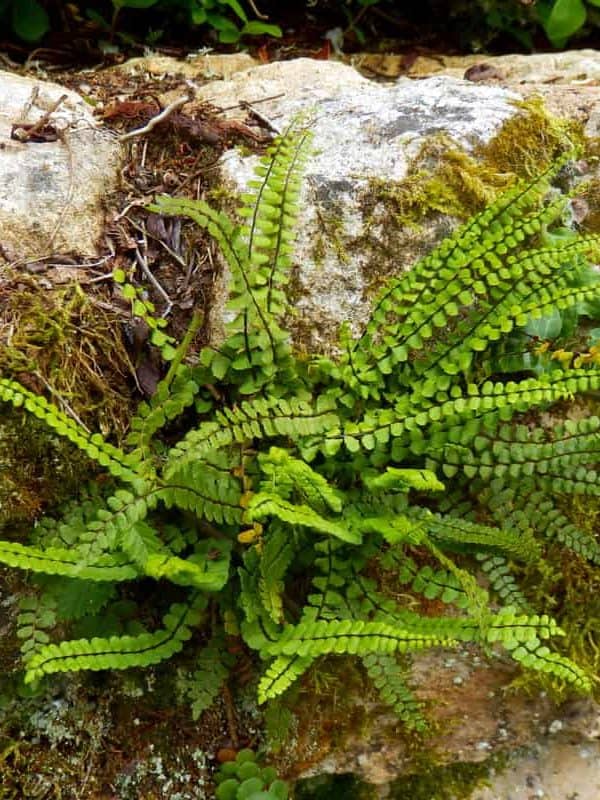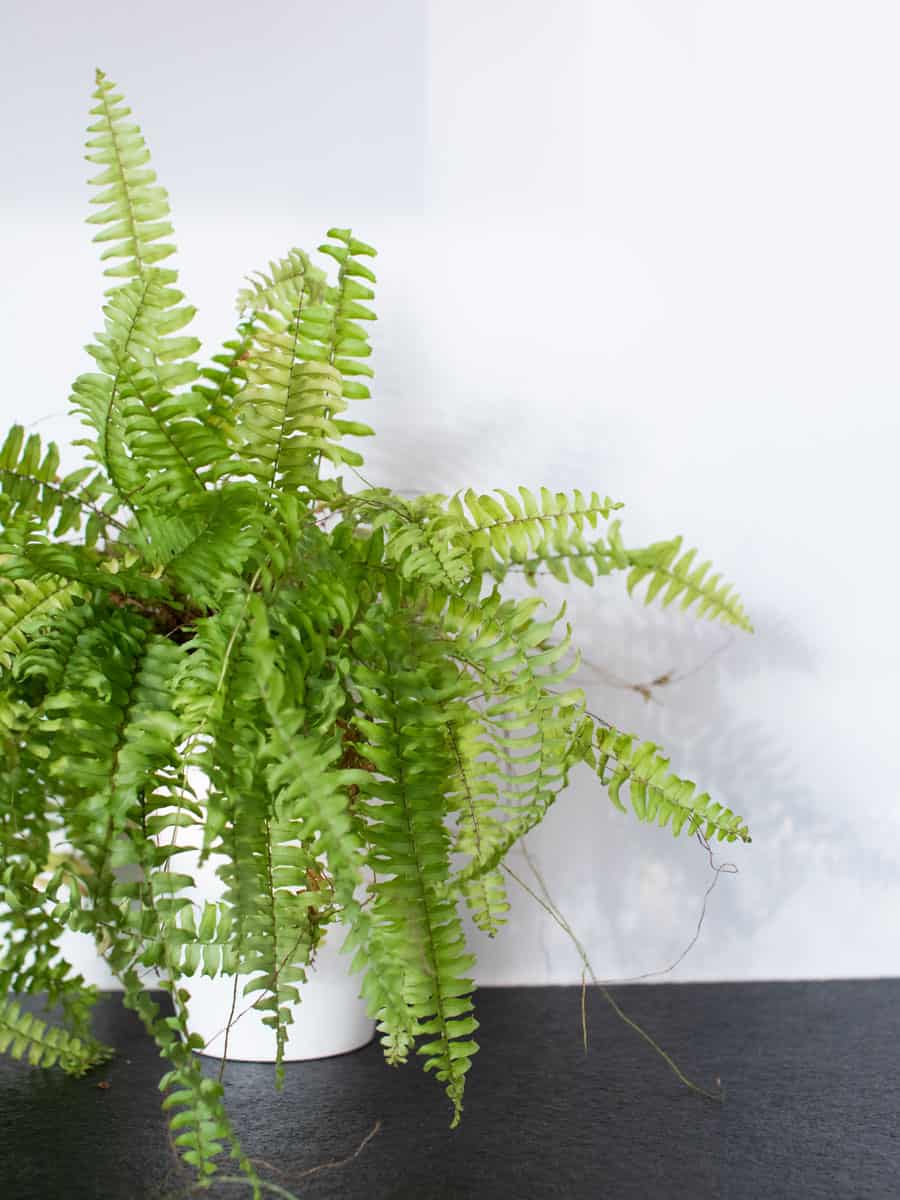Figuring out how you want to decorate your garden can feel like a daunting task. Do you want to plant a fern but don't know which varieties can handle full sun and grow in a pot/planter? Well, we've done some research and have 11 great suggestions to share with you! Let's check them out below.
For those wanting to grow their fern in a pot in the full sun, you've got plenty of options. Some of our top recommendations include:
- Bracken Fern
- Japanese Climbing Fern
- Maidenhair Spleenwort
- Meadow Fern
- Northern Maidenhair Fern
- Silver Elkhorn Fern
- Sensitive Fern
- Water Fern
- Pellaea Fern
- Moa Fern
- Lady Fern
Now that you have these ideas in your head, let's discuss each in detail. Whether you're new to fern-growing or have one that you need to transplant, we're here to assist. With that said, let's dive head first into this topic!
![Flowering plants fern cultivated in modern orangery, Ferns For Pots In Full Sun Outdoors [11 Excellent Ideas For Your Landscaping]](https://gardentabs.com/wp-content/uploads/2022/08/8.-Ferns-For-Pots-In-Full-Sun-Outdoors-11-Excellent-Ideas-For-Your-Landscaping.jpg)
Ferns You Can Grow In Pots In Full Sun
1. Bracken Fern

First, we have the bracken fern to try growing in a pot in the full sun. Besides being hardy, these gorgeous ferns are known for their large, highly divided leaves.
Furthermore, this fern variety has been used for medicinal purposes for centuries, often helping with nausea, stomach cramps, rheumatism, and headaches.
You can also expect your bracken fern to reach a mature height of 3-4 feet, so it's a great statement plant. According to experts, bracken ferns are also virtually pest and disease free, so that's a huge bonus.
2. Japanese Climbing Fern

Switching gears a bit, we have the Japanese climbing fern for your garden. Despite being more of a ground-covering/vine-like fern variety, this plant will do well in the sun and can grow in a pot.
This perennial species can extend more than 90 feet, although you won't likely see this while pot-growing yours. Furthermore, it could be worth it to try growing your climbing fern alongside a wall or trellis, as this can help train it vertically.
3. Maidenhair Spleenwort

Third, we have a maidenhair spleenwort fern variety that prefers bright light but can also handle partial shade. Generally, this fern species thrives in moist soil, so don't forget to water it.
In addition, many gardeners refer to this fern type as "the finest miniature fern," so it's certainly worth checking out. Also, growing a miniature fern in a pot is an easy way to train it.
According to The Wildlife Trusts, you will often see this type of fern growing on rocks, crevices, walls, or vertically, so it's another option for near a trellis/structure.
4. Meadow Fern

Another great fern for the full sun and a pot is a meadow variety. This fern species is native to eastern North America and throughout Eurasia, so it can handle quite the weather conditions.
These ferns do best in the sun and tend to thrive in "marsh-like" environments. You will also see these ferns thicken out fairly quickly, so they're a perfect choice for adding texture to a landscape.
Moreover, meadow ferns reach mature heights of 12-30 inches, so they are on the smaller side.
5. Northern Maidenhair Fern

Moving back to the maidenhair family, we have this fern species for a pot in the full sun. Typically, this fern variety will feature dark, shiny stems and has more delicate foliage.
Furthermore, northern maidenhair's get to be between eight and 20 inches tall, so they're a smaller option for your landscaping.
Another interesting fact about these ferns is that they tend to spread their pinnae horizontally in a nearly perfect circle, making for a stunning garden feature.
6. Silver Elkhorn Fern

At number six, we have the silver elkhorn fern for pots in the full sun. Whether you plant these ferns inside or out, they love direct sun exposure.
However, keeping them well-watered is essential, as they can be pretty temperamental.
When it comes to weather tolerance, silver elkhorns prefer climates between 60 and 80 degrees Fahrenheit and humidity within the 70-80th percentile.
You also don't need to give this fern much attention, with many gardeners recommending a once annually fertilization.
7. Sensitive Fern

Next up, we have the sensitive or "bead" fern for a pot in the full sun. Generally, this course-textured fern will grow pretty large, often reaching a mature height of more than three feet.
Regarding climate, sensitive ferns don't tolerate the cold well. So, it's best to grow these outdoors as long as the winters where you live are moderate.
Specifically, sensitive ferns grow best in USDA zones 2-10, so keep that in mind. For their soil, these ferns aren't too picky and can handle clay, loam, or sand, which is a significant bonus.
8. Water Fern

This could be the perfect idea for your landscape for anyone wanting to try planting an aquatic fern outdoors in the full sun. Generally, water ferns prefer tropical environments and thrive when grown in moist conditions.
One misconception about water ferns is that they must be entirely submerged in water. This is untrue.
As long as they have high humidity and you water them often, your water fern should grow healthy and strong in a planter. Various ferns fall into the "water" category.
These are broadleaf water sprite (C. cornuta); floating antlerfern, or water horn fern (C. pteridoides); triangle water fern (C. richardii); and water sprite (C. thalictroides).
9. Pellaea Fern

Coming in ninth, we have the Pellaea fern. Not only does this fern species love the sun, but it also prefers to stay moist throughout the year.
With that said, you don't want to give a Pellaea fern too much water, as this can cause it to become waterlogged. This fern is somewhat tiny, usually growing around ten inches long.
For those wanting to grow Pellaea outside, make sure your fern doesn't receive too much hot afternoon sun but bright morning exposure.
You'll also notice how this variety has darker foliage, which makes it a perfect stand-out choice for your garden.
10. Moa Fern
Moving to a more tropical fern species, we have the Moa fern. Native to the Main Hawaiian Islands in dry to wet areas, this fern can grow nearly anywhere you decide to plant it.
Another interesting feature of this plant is that it can survive in urban landscapes, so if you have a city garden, this could be the one for you.
Furthermore, you may want to train your potted Moa fern to grow up a trellis or nearby tree, so it makes for a great vertical fern as well.
11. Lady Fern

Moving back to North America, we have the ever-loved lady fern. This large, almost feathery fern species is a favorite among gardeners and is very easy to manage.
Besides bouncing back after drought or periods of neglect, these ferns can grow in almost any environment.
However, we recommend planting yours somewhere that gets bright morning sun and more shade throughout the afternoon.
Again, if you're somewhere with moderate weather, you can get away with full sun all year, so this comes down to your location.
Do Ferns Prefer Full Sun?
Yes, many fern species prefer full sun exposure. Of course, this can depend on where you live and how hot it gets, so everyone will be different.
Even ferns that don't typically like the sun shouldn't have adverse side effects if you water them enough.
Again, this can be hit or miss, so it's essential to do your research before planting anything. With that said, moving a potted fern around can be easy while you figure out its routine, hence why so many gardeners choose that route.
According to Fern Gardening, many ferns do best in bright, indirect light, so that could be the best idea to start.
How Often Should I Water My Fern?
As we mentioned throughout this post, ferns love water. Therefore, giving your plant water 2-3 times each week (or more depending on the weather) is a good idea.
However, certain ferns don't like too much moisture. A good way to test your fern's ground before watering is to use a meter or your hand.
If the soil feels wet about an inch, you don't need to add more water to your fern.
Furthermore, if it recently rained and your fern looks green, you might not need to water it for a few days. Sometimes, mother nature helps out when you need her most, especially in places with constant rainfall.
Some experts recommend watering a fern every 2-3 days if the weather is warm and dry and then waiting between five and seven during cooler, wetter seasons.
Are Ferns Easy To Grow And Care For?

In general, growing ferns should be easier outdoors compared to inside. Considering you want to plant your fern in a pot outside, taking care of your plant shouldn't require much effort.
As we mentioned, watering a fern is essential to its care routine. Moreover, giving your fern enough sun exposure can make a world of difference.
Of course, not all fern species love heat or direct sun exposure, but many will appreciate bright light in the morning and partial shade for the rest of the afternoon.
To Finish Up
Whether you have various ferns growing in your yard or want to plant one, knowing how to care for your plant is essential. From what we found, many ferns grow in pots in the sun.
Bright light is always welcome, whether it's a bracken variety, a northern or spleenwort maidenhair, or even a decorative lady fern variety.
In addition, you also need to keep certain ferns moist if you have them in full sun.
Made it to the end? Check out these other inspirational garden posts below!
When To Transplant Ferns [And How To]
Why Is My Fern Dying And What To Do About It?
Do Ferns Need Drainage? [And How Much Should You Water Them]

